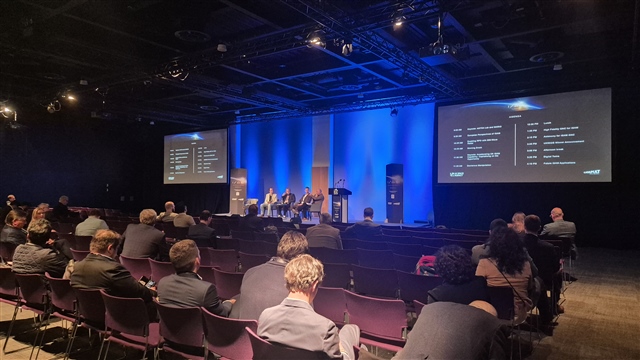In-Space Servicing, Assembly, and Manufacturing (ISAM) is transforming how we build, maintain, and use infrastructure in orbit. These technologies allow spacecraft to be assembled, serviced, or upgraded directly in space, and enables the production of highvalue materials in the space environment – unlocking exciting new operational possibilities.
This year’s ISAM conference, hosted in Belfast, brought together a broad spectrum of stakeholders from government, industry, and academia. The event served as a platform to align ambitions, share progress, and highlight the UK’s growing leadership in this rapidly evolving sector.
Notably, companies like Space Forge – pioneering semiconductor production on-orbit and securing the UK’s largest Series A investment for space tech at £30 million – demonstrated the momentum behind in-space manufacturing. Attendees also heard from ClearSpace and Astroscale, both advancing technologies in orbital servicing and debris removal. Their presence underscored the sector’s focus on sustainability and agility as ISAM capabilities mature.

Strategy and Sovereignty: Government and UKSA Unite on ISAM
The UK government has identified ISAM as a sovereign capability, particularly vital for defence, as highlighted in the recently published Strategic Defence Review 2025. With a goal to capture 25% of the projected £11 billion global ISAM market by 2031, the message at the conference was clear: the UK intends to lead in this domain.
The UK Space Agency (UKSA) reinforced the government’s ambition with a long-term vision to deliver value-driven ISAM capability by 2035. A five-year roadmap is already in development, focused on accelerating flight-ready technologies, enabling commercial services, and establishing dynamic regulatory frameworks. Orbital demonstrations were highlighted as a key step toward achieving operational maturity.
Unexpected Allies: Cross-sector Collaboration
A standout theme at the conference was the increased presence of industries not traditionally associated with space – such as nuclear fusion, offshore energy, pharma, and big tech. Their involvement highlights ISAM’s growing multidisciplinary nature. Technologies like robotics, originally developed for other sectors, are now being rapidly adapted for space, accelerating development and lowering the barriers to deployment. As the boundaries between sectors blur, the next wave of ISAM innovation may come from places we least expect.
Onward from Belfast
The Belfast ISAM conference was more than just informative – it was energising. It showcased the dynamic nature of the space sector and the value of in-person engagement. The event reinforced that innovation in space is driven as much by collaboration as by technology. I left genuinely inspired to see where these initiatives lead next.
Author Bio
Matthew Deans is a PhD candidate in Aerospace Engineering at the University of Glasgow, specialising in control systems for ISAM platforms. He also contributed to the UKSA NextSpace Test Rig project, developing a facility for testing 3D-printed materials in spacelike conditions. He has recently joined the Satellite Technical Network and looks forward to contributing to ongoing discussions in the field.